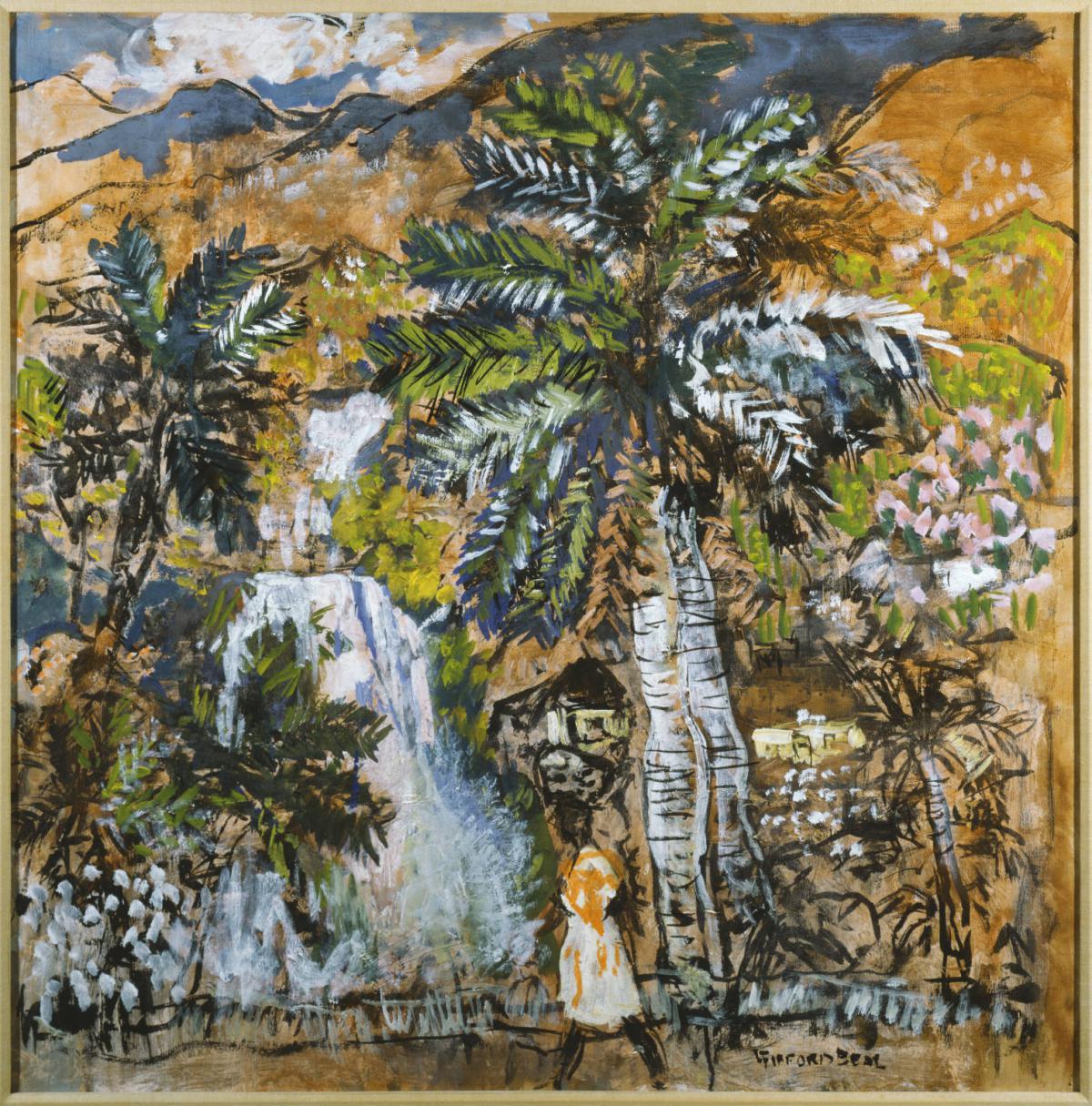Waterfall, Haiti
Gifford Beal ( 1954 )

As a young artist Gifford Beal traveled to the Caribbean where he was instantly attracted to the bright colors and lively culture. However, the tropical environment did not agree with him and he left shortly after his arrival. In 1953, Beal and his wife ventured back to the Caribbean, traveling to Haiti. He again became ill, but not before he made a number of on-the-spot sketches and quick drawings of his impressions of the island. Upon his return to the United States, Beal executed eight paintings based on his drawings and memories of his trip, including Waterfall, Haiti, completed in 1954.
In Waterfall, Haiti, Beal’s always playful color palette has become ever more keyed-up and intense. At this point, he began to use color in a more arbitrary way, trying to capture the intensity of the tropical jungle, rather than paint a naturalistic representation of what he saw. Beal’s brushwork is loose and quick, making the painting appear to buzz with heat. The horizon line of the painting is close to the top edge of the canvas, which flattens the perspective, again demonstrating that Beal’s goal was not to depict a faithful representation, but to convey his memories of sense and color. All these elements together create a decorative quality to Beal’s work, as he distills the Haitian spirit into a pictorial vocabulary.